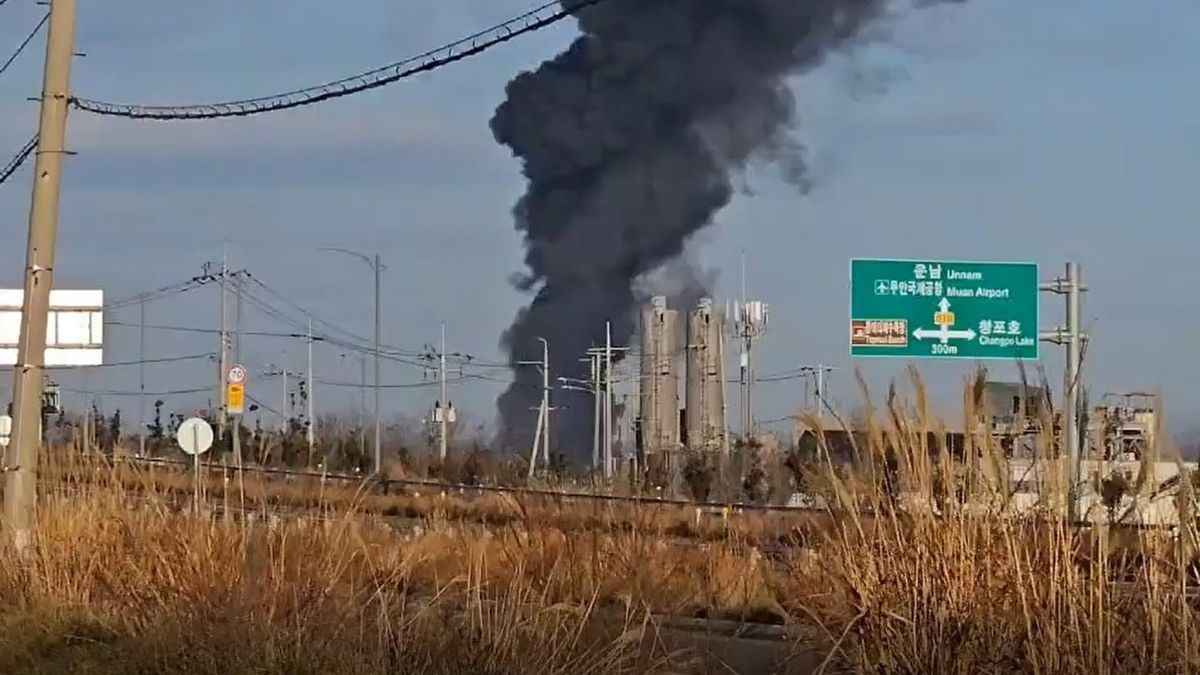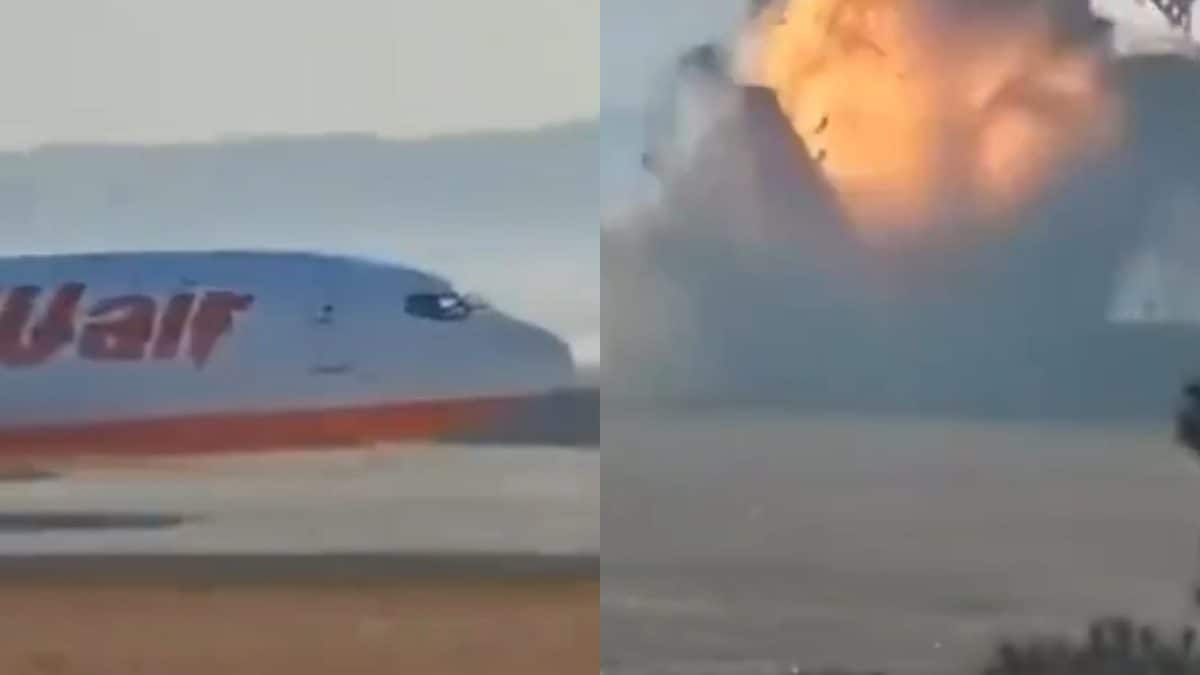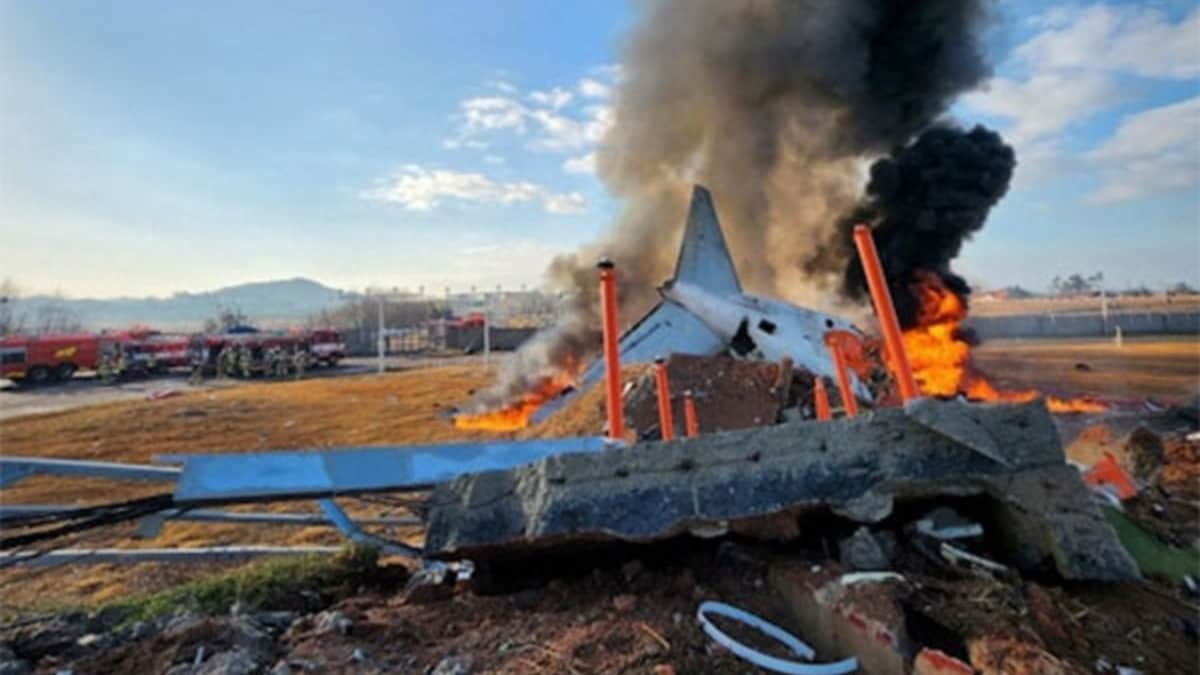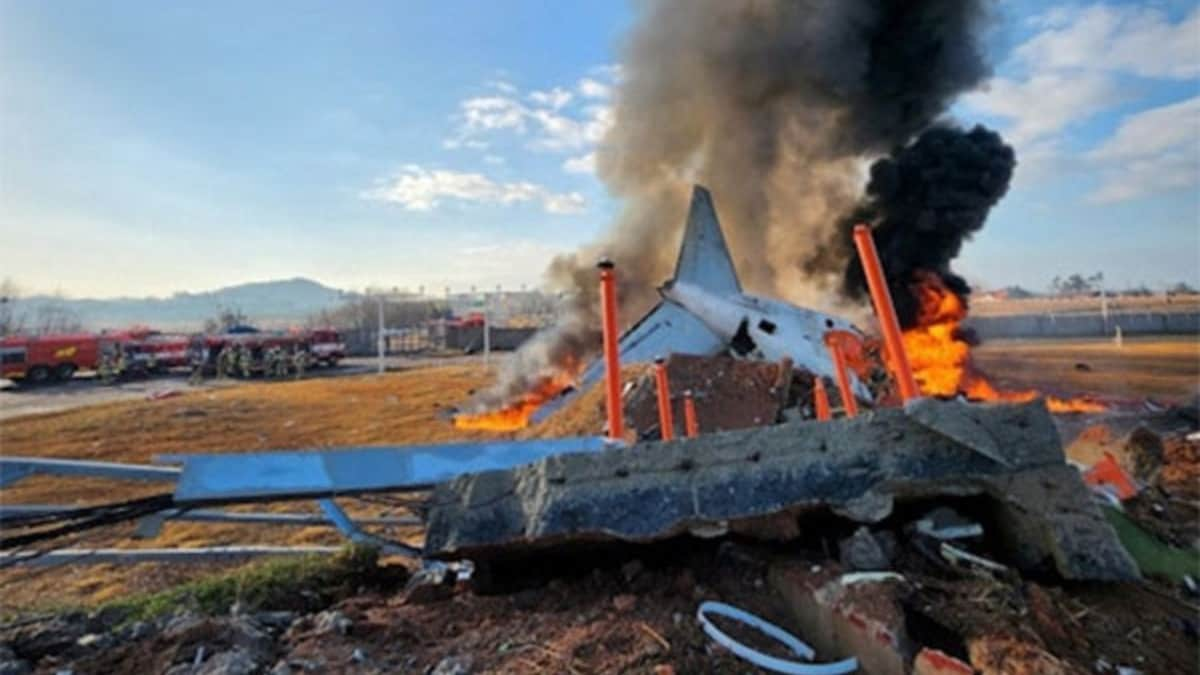Plane crash South Korea today: A devastating air accident has unfolded in South Korea, prompting immediate emergency responses and raising crucial questions. Initial reports paint a picture of chaos and urgency, with emergency services scrambling to the scene and news outlets vying to provide updates. Understanding the unfolding situation requires piecing together information from various sources, verifying details, and anticipating the long road to investigation and recovery.
This event underscores the fragility of air travel and the immense human cost of such tragedies. We’ll explore the immediate aftermath, casualty details, aircraft information, potential causes, and the ongoing investigation, aiming to provide a clear and informative account of this developing story. The impact on South Korea and the global aviation community will undoubtedly be significant, prompting discussions about safety protocols and preventative measures.
South Korea Plane Crash: Initial Reports and Ongoing Investigation: Plane Crash South Korea Today
This article provides an overview of the recent plane crash in South Korea, summarizing initial reports and ongoing investigations. Information is compiled from various news sources and may be updated as more details emerge. It is crucial to remember that details are still unfolding, and information may change as the investigation progresses.
News about a plane crash in South Korea today is understandably worrying. It’s important to remember that investigations take time, and details will emerge. For instance, a similar incident, the jeju air plane crash , highlighted the crucial role of thorough accident analysis. Understanding past events helps us better prepare for and respond to future plane crashes in South Korea today and beyond.
Immediate Aftermath of the Event, Plane crash south korea today

Emergency response teams, including firefighters, paramedics, and police, were rapidly deployed to the crash site following the initial reports. Communication channels utilized included emergency radio frequencies, dedicated hotlines, and official government press releases. Social media platforms also played a significant role in disseminating information, albeit with varying degrees of accuracy.
A preliminary timeline suggests that the first emergency calls were received approximately [Time] following the crash. Within the first hour, emergency personnel secured the perimeter, initiated search and rescue efforts, and began transporting casualties to nearby hospitals. Initial reports focused on the location and the apparent severity of the crash.
News about a plane crash in South Korea today is understandably worrying. Thinking about air tragedies, it’s worth remembering other incidents, like the one detailed in this report on an airplane crash halifax which highlights the importance of thorough investigations and safety protocols. The South Korean crash investigation will likely follow a similar rigorous process to determine the cause and prevent future accidents.
| Source | Time of Report | Location | Initial Details |
|---|---|---|---|
| Yonhap News Agency | [Time] | [Location – be specific, e.g., near Gimpo Airport] | Reports of a plane crash; unknown number of casualties. |
| KBS News | [Time] | [Location] | Confirmed plane crash; emergency services responding. |
| [News Source 3] | [Time] | [Location] | [Initial details from source 3] |
| [News Source 4] | [Time] | [Location] | [Initial details from source 4] |
Casualty and Victim Information
The exact number of casualties remains under investigation. Initial reports suggest a range of [Number] casualties. The nationalities of passengers and crew are currently being confirmed, with early reports indicating a mix of South Korean and [Other nationalities]. The process of victim identification involves collaboration between forensic teams, dental records, and DNA analysis, with notification of families handled with sensitivity and support from designated personnel.
| Status | Number | Nationality (if known) | Further details |
|---|---|---|---|
| Survivors | [Number] | [Nationality] | [Details, e.g., hospitalized, injuries sustained] |
| Fatalities | [Number] | [Nationality] | [Details, e.g., awaiting identification] |
| Missing | [Number] | [Nationality] | [Details, e.g., search ongoing] |
Aircraft Details and Flight Information
The aircraft involved was a [Aircraft type], registration number [Registration number]. The flight’s planned itinerary was [Origin] to [Destination], with a scheduled departure time of [Time]. The aircraft’s maintenance records, including details of previous inspections and repairs, are currently being reviewed as part of the investigation. Information regarding the crew’s experience and qualifications is being gathered from official flight logs and personnel records.
Potential Causes and Investigations

Several potential contributing factors are being investigated, including weather conditions at the time of the crash, potential mechanical failures, and human error. The investigation will involve multiple agencies, including the South Korean Ministry of Land, Infrastructure, and Transport, the air accident investigation branch, and potentially international aviation safety organizations.
Standard investigative procedures include a thorough examination of the wreckage, analysis of the flight data recorder (FDR) and cockpit voice recorder (CVR), and interviews with witnesses, air traffic controllers, and maintenance personnel.
- Witness interviews
- Black box analysis
- Weather data review
- Aircraft maintenance logs review
- Air traffic control recordings
Public Reaction and Media Coverage
Social media platforms have been filled with expressions of grief, shock, and concern. News outlets have provided extensive coverage, focusing on the immediate aftermath, casualty numbers, and the ongoing investigation. The media’s portrayal has generally been somber and respectful, although there may be variations in emphasis depending on the news outlet. Comparisons to previous air accidents in South Korea will inevitably be made, examining similarities and differences in public response and media coverage.
So, there’s been a plane crash in South Korea today, which is pretty serious news. It makes you think about the fragility of life, especially when you compare it to something like the incredible precision of a large-scale drone show, like the amazing china dragon drone show – those things are coordinated down to the millisecond. Anyway, back to the plane crash – investigations are underway, and we’ll hopefully learn more soon.
Long-Term Consequences and Impact

The crash will undoubtedly have long-term consequences, impacting air travel in South Korea, the aviation industry, and the families of the victims. Economic implications include potential losses for airlines, insurance companies, and related businesses. Support systems and resources, including counseling and financial aid, will be made available to the affected families.
- Increased safety regulations
- Review of existing aviation policies
- Potential changes in air traffic management procedures
- Enhanced pilot training programs
Visual Representation of the Event (Illustrative)
The crash site is described as a scene of significant devastation, with scattered wreckage spread across [area description]. The surrounding landscape [describe the landscape – e.g., mountainous, flat, near a body of water]. The aircraft, prior to the crash, was a [Aircraft type], a [size description] aircraft, with distinctive [describe distinctive features, e.g., livery, tail markings]. Emergency response included numerous fire trucks, ambulances, police vehicles, and specialized rescue teams working amidst the wreckage.
Final Thoughts
The plane crash in South Korea today serves as a stark reminder of the risks inherent in air travel and the importance of thorough investigations to prevent future tragedies. While the immediate aftermath focuses on rescue and recovery, the long-term consequences will resonate through investigations, policy changes, and the lasting impact on the families and communities affected. As more information emerges, a clearer picture of the events leading to the crash will hopefully come to light, offering valuable lessons for the aviation industry and enhancing safety measures globally.
Query Resolution
What type of aircraft was involved?
This information will be revealed during the official investigation and released by authorities.
Where exactly did the crash occur?
The precise location will be confirmed once the investigation team releases official reports.
What is the expected timeline for the investigation?
Air accident investigations can take months, even years, to complete thoroughly.
How can I help the victims’ families?
Information on how to offer support will likely be released through official channels once details are available.
